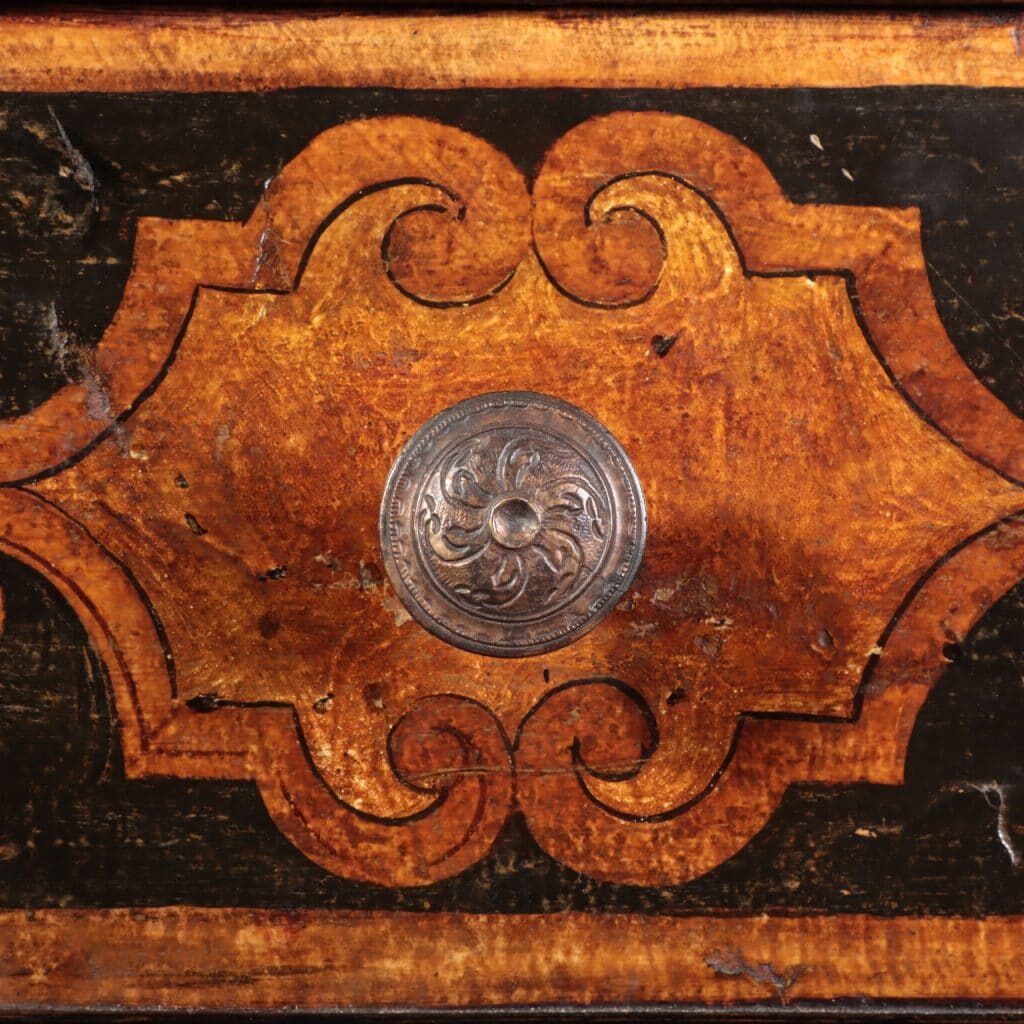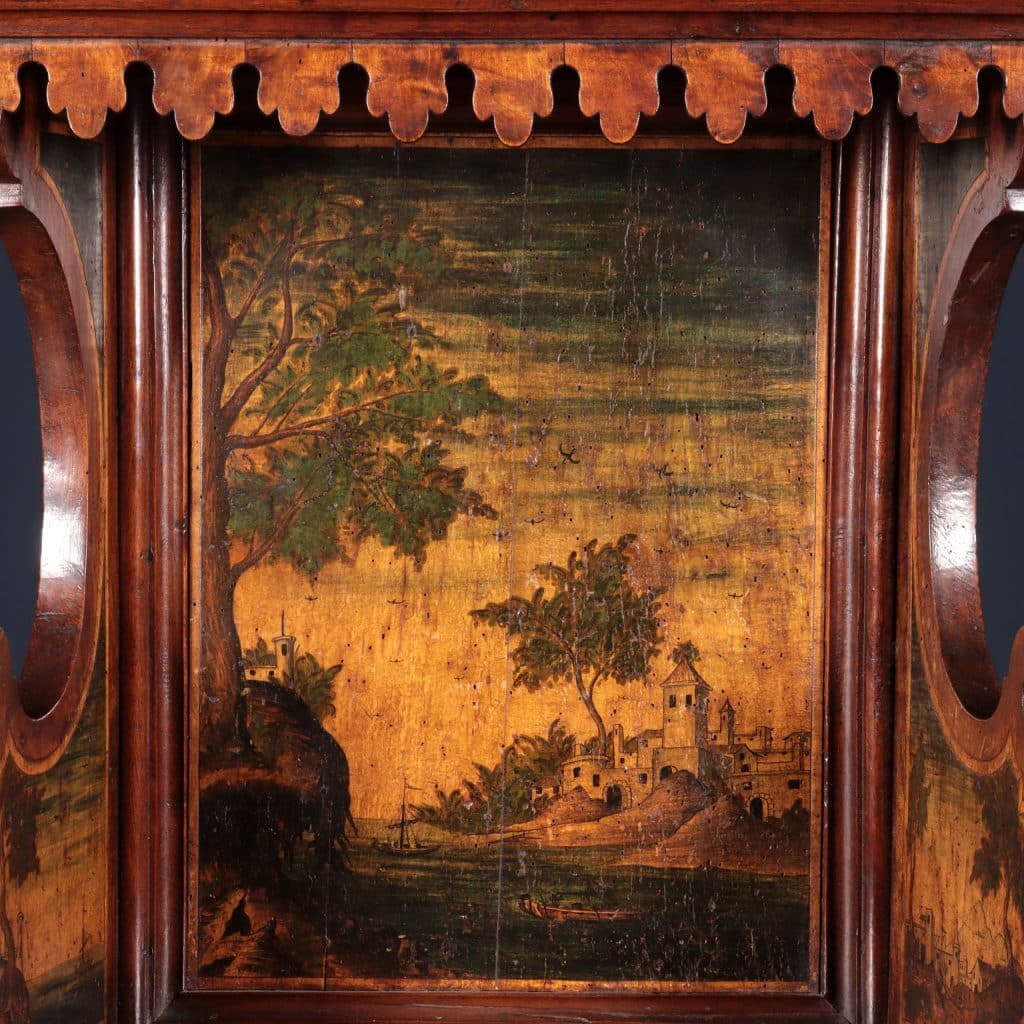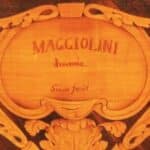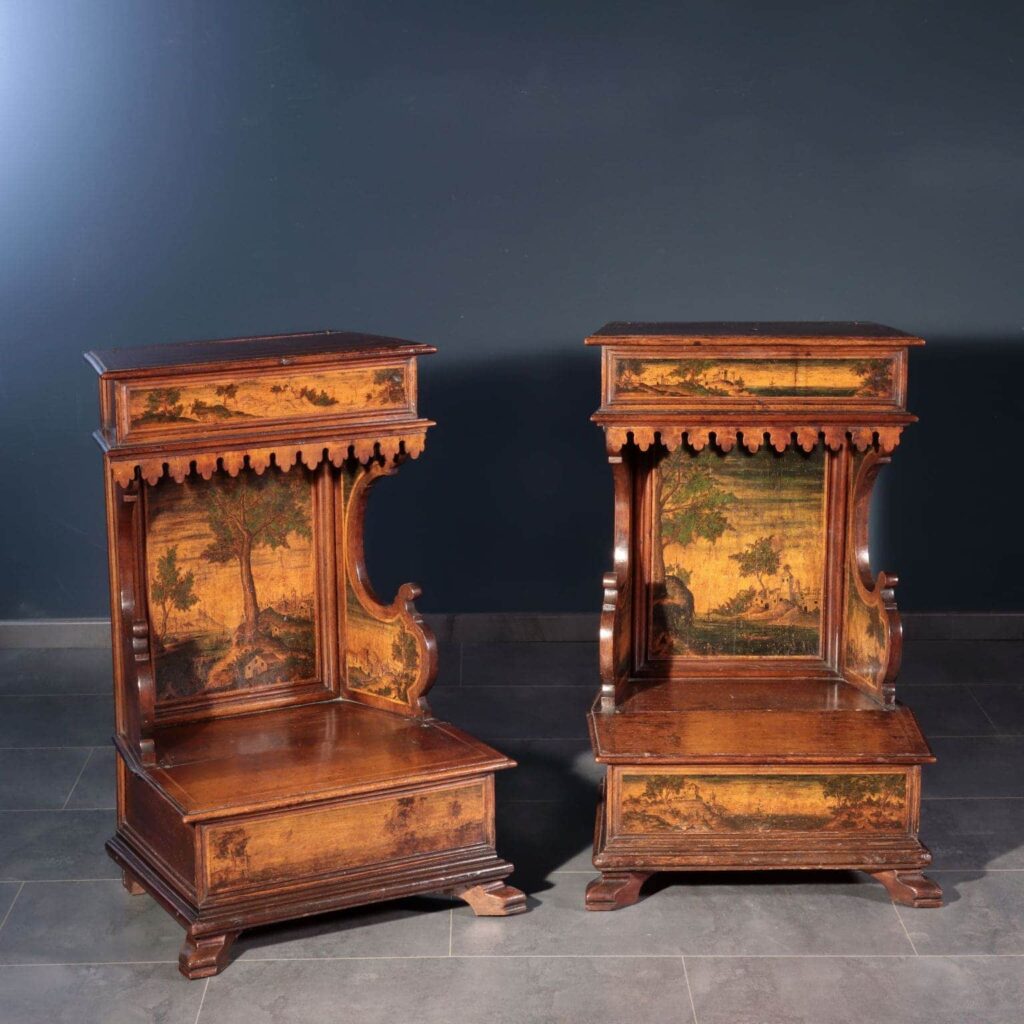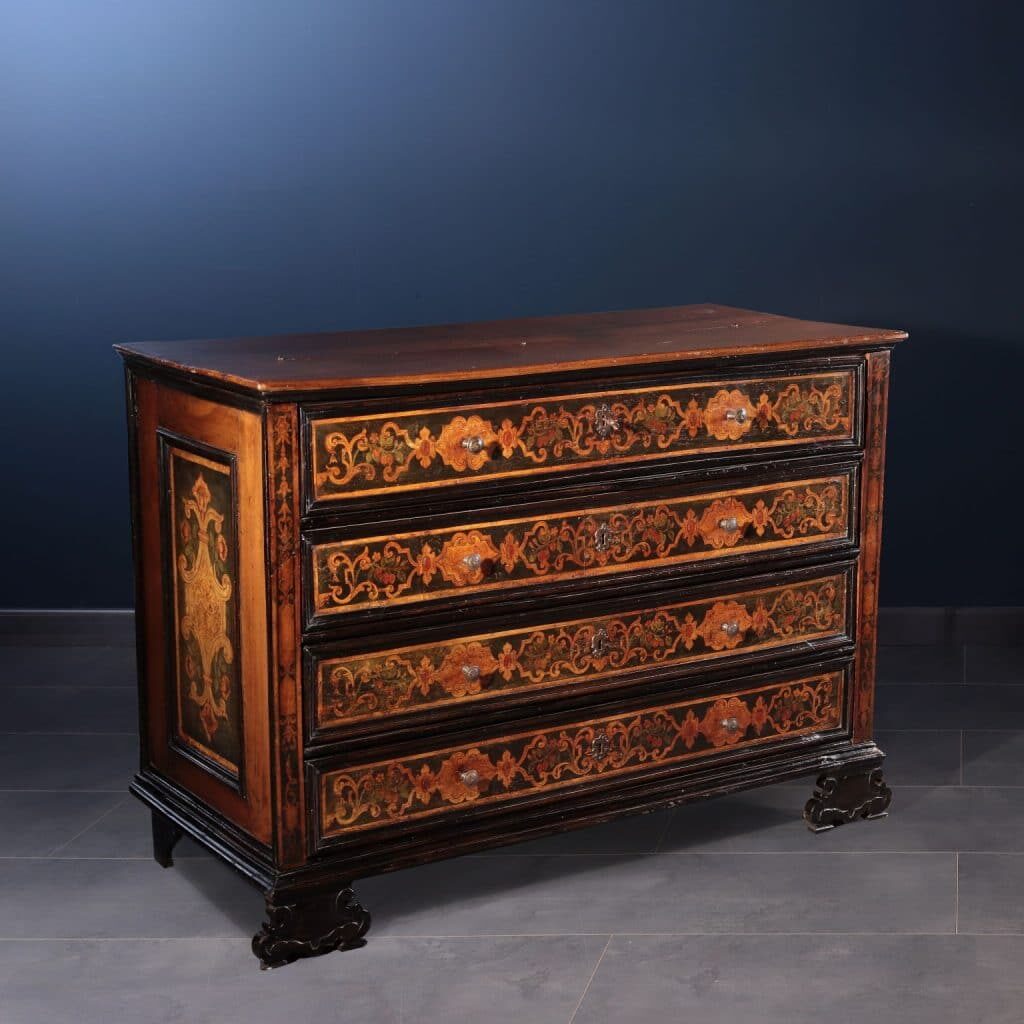A Bergamo workshop from the first half of the 18th century
A pair of kneelers from the FineArt by Di Mano in Mano collections offers a more complete picture of the production of a Bergamo workshop, active in the first half of the 18th century.
Already known are a group of furniture for which Enrico Colle has put forward the proposal that they are furnishings licensed from the same shop. In the volume dedicated to the collections of the Museum of Applied Arts of the Castello Sforzesco in Milan, he presents a chest of drawers and a pair of corner cabinets clearly attributable to the same production. The chest of drawers was actually, in all probability, reassembled in the nineteenth century, using parts of an older eighteenth-century piece of furniture.
In particular, the reserves in the center of each drawer feature wooden panels painted with landscapes, a peculiar characteristic of the workshop being analyzed.
In fact, it is precisely this decorative modality that is the stylistic characteristic that distinguishes the production of the workshop and that allows the furnishings in question to be brought closer together. In all cases, these are natural, wooded and aquatic landscapes (lakes or perhaps rivers), in which there are small inhabited centers, with steeples and towers that rise in height. It is a theme adopted in the German area by the inlayers to decorate the surfaces of the furniture, and re-proposed in painting by the artisans of Bergamo and the nearby Alpine valleys.
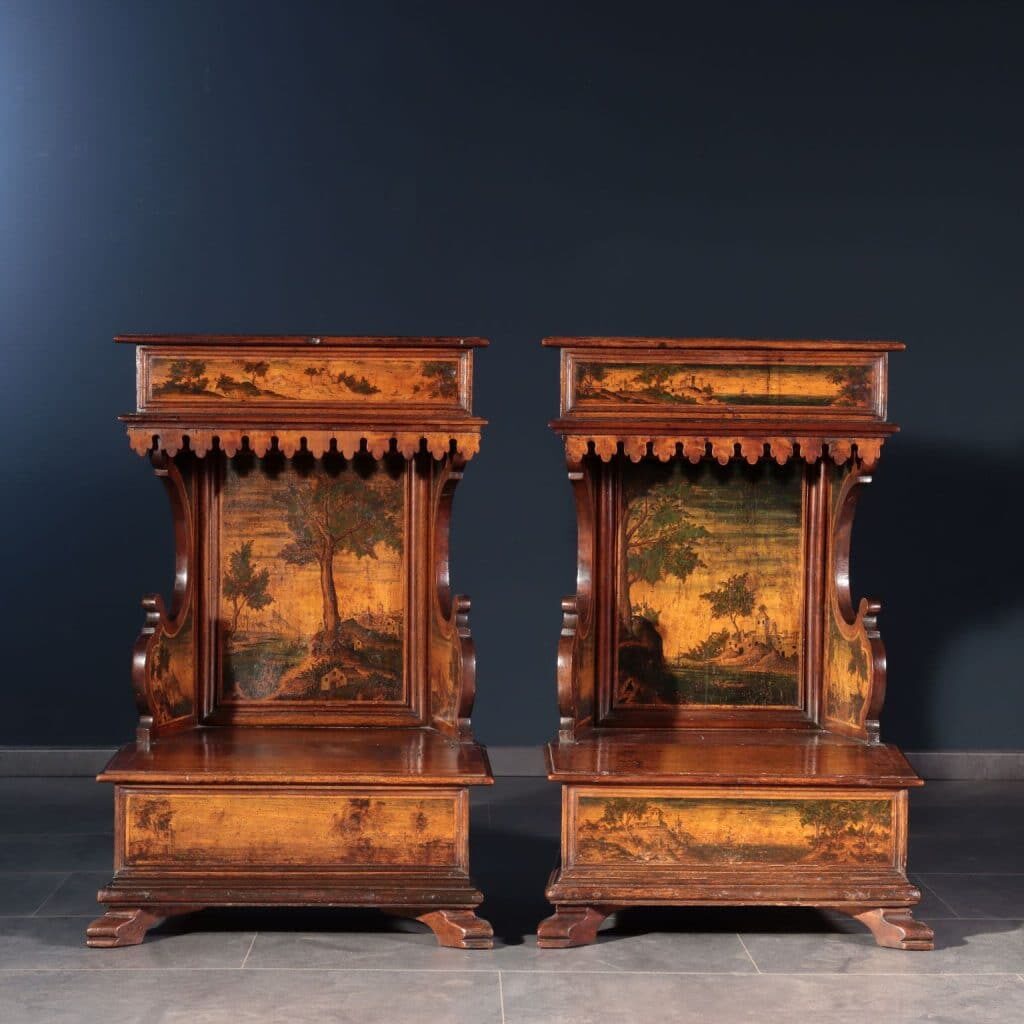
Precisely these reasons are at the basis of the approach to this production also of the pair of corner cabinets, which on the door of the front have shaped panels painted with landscapes repeated also on the stepped crown, the latter probably, as already highlighted by Colle, the result of a makeover by the Mora brothers, famous furniture makers and from whose collection the two corner cabinets come.
Colle also has the merit of having brought back to the same shop some furniture published by Clelia Alberici who, in her volume on the Lombard piece of furniture, while indicating them as furniture from Bergamo, does not identify them as works licensed by a single shop. The chest of drawers proposed here has in fact four drawers on the front, also painted with the already well-known landscapes.
Punctual comparisons with our pair of kneelers, on the other hand, are possible for a third example, also published by Alberici. Slight differences can be found in the feet and in the lack of the carved lambrequin that adorns the band placed under the upper shelf.
Quite similar, in addition to the usual landscapes, the structure and, in particular, the shaped and carved uprights that support the bottom panel and the armrest.
Also interesting is the technique used for the pictorial parts, made “all’acquetta”, a technique very similar to watercolor that facilitates the penetration of color into the underlying essence. This mode also allows a certain precision in the drawing areas and a brilliant, but at the same time veiled rendering of the larger areas, such as the sky or the waters, letting the earthy color of the wood emerge.
In our opinion, the catalog of the shop can be further expanded. Some details of the furniture already presented show in fact how the shop also licensed another type of ornamentation, thus being able to hypothesize a four-handed work of two different decorators. We would thus have a real painter, author of the landscapes, and one who instead specializes in a decoration derived from the inlay with phytomorphic scrolls.
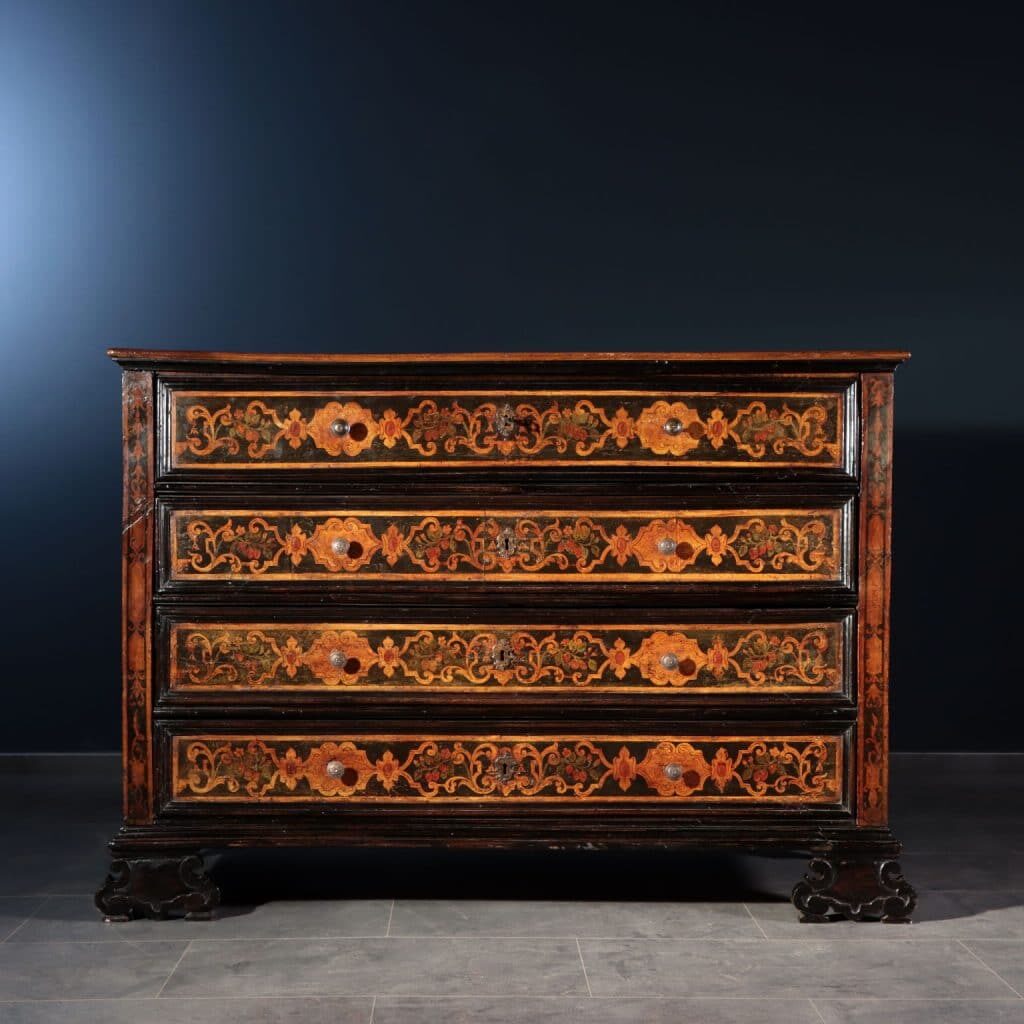
This hypothesis is supported by the fact that some of the furnishings have both decorative types and possible comparisons between them. In particular, the chest of drawers with landscapes published by Alberici presents the front shelf feet shaped and painted with leafy and floral motifs, completely identical to those of another chest of drawers published in the same volume and formerly owned by Luigi Ongaro Antichità. This specimen, instead of being painted with the well-known landscapes, has a flower and strawberry decoration on the front that wants to imitate the inlay. This decorative typology, moreover, is also found in the pair of corner cabinets already examined.
Here, respectively, on the uprights inside shaped panels and in the lateral reserves of the drawers, we find the same phytomorphic decorations painted on a dark background. It therefore seems plausible to attribute to the same shop also another chest of drawers, already in the FineArt by Di Mano in Mano collections, characterized by the same painted decoration. Here, too, the painting imitates inlay motifs, simulating threads and reserves; on the front of the drawers is painted a decoration with baroque scrolls, with lambrequins, pendants and reserves intertwined with strawberries, fruits and flowers.
On the small drawers inside the cabinet, volutes with two strawberry flowers start from a mixed-line reserve; the sides, in addition to the typical reserves, have painted roses. The structure is also matched by the former Ongaro chest of drawers, with three drawers on the front, surmounted by a fourth with opening front, so as to allow access to the cabinet with the drawers.
For this furniture it is therefore possible to advance the hypothesis, with a good margin of certainty, that it is a production licensed by the same shop, which specializes in the production of furnishings characterized precisely by the creation of painted furniture. Already well known to the studies are other important Bergamo workshops active in these years, among which the best known are that of the Rovelli and that of the Caniana, however they are dedicated to inlay. The high quality of the furnishings of this geographical area is clear, but until now less known and studied, perhaps also by virtue of its rarity, it is precisely this production characterized by the pictorial revival of what were the usually inlaid motifs alternating with landscapes .
These studies therefore hope to contribute to the rediscovery and addition of information to the catalog of this prolific Bergamo-based workshop.
